Uncategorized
Crypto Daybook Americas: Bitcoin Risks Losing Key Support Zone as Risk Assets Struggle

By Omkar Godbole (All times ET unless indicated otherwise)
Risk assets are trading down as the dollar index and Treasury yields benefit from Friday’s blowout nonfarm payrolls report and the Palisades Fires posing a risk to the insurance sector and some P&C companies.
BTC is down 2%, changing hands in the key support zone of $90,000 and $93,000, with alternative cryptocurrencies posting bigger losses as usual. ETH has dropped to the lowest since Dec. 21 and the risk-off has clouded XRP’s bullish technical outlook (see TA section). Whales likely accumulated XRP over South Korea-based Upbit over the weekend. AI coins is the worst performing sub-sector of the past 24 hours. In traditional markets, futures tied to the S&P 500 point to negative open alongside continued downside volatility in the British pound and emerging market currencies.
The risk-off sentiment, however, didn’t stop Michael Saylor from indicating a potential for another bitcoin purchase as he shared an update on MicroStrategy’s bitcoin purchase tracker. If it would put a dent into the negative market sentiment, is another story. «The firm’s purchase last Monday amounted to approximately $100 million, which had limited market impact, but underscores the firm’s ongoing demand,» Valentin Fournier, analyst at BRN said.
Other things being equal, the risk of BTC losing the support zone appears high as some investment banks believe the Fed rate-cutting cycle is over, with Bank of America suggesting a potential for a rate hike. Per some observers, the consensus is that prices will deflate to $70K, followed by a renewed rally.
Meanwhile, the 30-day moving average of the Coinbase-Binance BTC price differential, which has a knack of marking major price tops, has slipped to the lowest since at least 2019, a sign of weaker stateside demand.
Over the near term, the crypto market is likely to focus on President-elect Donald Trump’s inauguration on Jan. 20 and the ongoing FTX claim distributions, according to Coinbase Institutional.
What to Watch
Crypto
Jan. 13: Solayer (LAYER) «Season 1» airdrop snapshot for staking participants, liquidity providers, and partner ecosystem users.
Jan. 15: Derive (DRV) to create and distribute new tokens in token generation event.
Jan. 15: Mintlayer version 1.0.0 release. The mainnet upgrade introduces atomic swaps, enabling native BTC cross-chain swaps.
Jan. 16, 3:00 a.m.: Trading for the Sonic token (S) is set to start on Binance, featuring pairs like S/USDT, S/BTC, and S/BNB.
Jan. 17: Primary listing of SOLV, the native token of Solv Protocol.
Macro
Jan. 13, 2:00 p.m.: The U.S. Department of the Treasury releases December 2024’s Monthly Treasury Statement report. Monthly budget deficit Est. $62B vs. Prev. $367B.
Jan. 14, 8:30 a.m.: The U.S. Bureau of Labor Statistics (BLS) releases December 2024’s PPI data.
PPI MoM Est. 0.3% vs. Prev. 0.4%.
Core PPI MoM Est. 0.3% vs. Prev. 0.2%.
Core PPI YoY Est. 3.7% vs. Prev. 3.4%.
PPI YoY Est. 3.4% vs. Prev. 3%.
Jan. 14, 8:55 a.m.: U.S. Redbook YoY for the week ending on Jan. 11. Prev. 6.8%.
Jan. 15, 8:30 a.m.: The U.S. Bureau of Labor Statistics (BLS) releases December 2024’s Consumer Price Index Summary.
Core Inflation Rate MoM Est. 0.2% vs. Prev. 0.3%.
Core Inflation Rate YoY Est. 3.3% vs. Prev. 3.3%.
Inflation Rate MoM Est. 0.3% vs. Prev. 0.3%.
Inflation Rate YoY Est. 2.8% vs. Prev. 2.7%.
Jan. 16, 2:00 a.m.: The U.K.’s Office for National Statistics November 2024’s GDP estimate.
GDP MoM Est. 0.2% vs. Prev. -0.1%.
GDP YoY Prev. 1.3%.
Jan. 16, 8:30 a.m.: The U.S. Department of Labor releases the Unemployment Insurance Weekly Claims Report for the week ending on Jan. 11. Initial Jobless Claims Est. 214K vs. Prev. 201K.
Jan. 17, 5:00 a.m.: Eurostat releases December 2024’s Eurozone inflation data.
Inflation Rate MoM Final Est. 0.4% vs Prev. -0.3%.
Core Inflation Rate YoY Final Est. 2.7% vs. Prev. 2.7%.
Inflation Rate YoY Final Est. 2.4% vs. Prev. 2.2%.
Token Events
Governance votes & calls
Aave community propose adjusting borrow rate for its GHO stablecoin from 10.50% to 9.00%.
Aavegotchi DAO has an active vote on modifying ETH sell ladder parameters due to «significant underperformance» by ETH.
Jan. 14: Mantra community call with its co-founder
Unlocks
No major unlocks scheduled today.
Jan. 14: Arbitrum (ARB) to unlock 0.93% of its circulating supply, worth $70.65 million.
Jan. 15: Connex (CONX) to unlock 376% of its circulating supply, worth $84.5 million.
Jan. 18: Ondo (ONDO) to unlock 134% of its circulating supply, worth $2.19 billion.
Token Launches
No major token launches scheduled today.
Jan. 15: Derive (DRV) will launch, with 5% of supply going to sENA stakers.
Jan. 16: Solayer (LAYER) to host token sale followed by five months of points farming.
Jan. 17: Solv Protocol (SOLV) to be listed on Binance.
Conferences:
Day 8 of 14: Starknet, an Ethereum layer 2, is holding its Winter Hackathon (online).
Day 1 of 12: Swiss WEB3FEST Winter Edition 2025 (Zug, Zurich, St. Moritz, Davos)
Jan. 17: Unchained: Blockchain Business Forum 2025 (Los Angeles)
Jan. 18: BitcoinDay (Naples, Florida)
Jan. 20-24: World Economic Forum Annual Meeting (Davos-Klosters, Switzerland)
Jan. 21: Frankfurt Tokenization Conference 2025
Jan. 25-26: Catstanbul 2025 (Istanbul). The first community conference for Jupiter, a decentralized exchange (DEX) aggregator built on Solana.
Jan 30-31: Plan B Forum (San Salvador, El Salvador)
Feb. 3: Digital Assets Forum (London)
Feb. 18-20: Consensus Hong Kong
Token Talk
By Oliver Knight
AI agent tokens have suffered a deep correction, with ai16z now trading at $1.02, down more than 60% from its record high set on Jan. 2. Virtual Protocol’s native token (VIRTUAL) has slumped a further 16% over the past 24-hours to compound its recent downtrend, it is now trading at $2.40 after surging to $5.04 on Jan. 2.
NFT project Azuki has announced the launch of ANIME, a Japanese cartoon-themed token that will distribute 50.5% of the token’s supply to the Azuki community. Azuki employees and advisors will receive 15.62% of supply bound by a vesting schedule.
Ethena’s ENA token has dropped by 11.4% over the past 24-hours as funding rates for ETH, which Ethena’s business model relies on, is beginning to fall into neutral territory. Ethena still offers a yield of 11% on its stablecoin although it’s unclear how long that rate is sustainable if funding rates continue to fall.
Ether whales have begun offloading ETH at a loss with one trader selling 10,070 ETH for $33 million at a $1 million loss, the wallet still holds $45 million, on-chain data reported by Lookonchain shows.
Derivatives Positioning
Perpetual funding rates for TRX, AVAX, SUI and TON have flipped negative, indicating a bearish shift in positioning.
Front-end risk reversals show a strong bias for BTC and ETH protective put options in line with the risk-off sentiment in markets. Screen traders have bought puts at $92K, $90K and $87K in BTC.
There is notable negative dealer gamma in the range of $90K and $93K, which means these entities might trade in the market’s direction to hedge book, bolstering the move. A similar dynamic exists between $3.2K and $3,450. in the ETH market.
BTC and ETH DVOLs, measuring 30-day expected price swings, remain in the familiar ranges for the month.
Market Movements:
BTC is down 3.12% from 4 p.m. ET Friday to $91,392.04 (24hrs: -2.67%)
ETH is down 4.78% at $3,109.45 (24hrs: -4.05%)
CoinDesk 20 is down 2.15% to 3,310.23 (24hrs: -3.08%)
Ether staking yield is down 16 bps to 2.97%
BTC funding rate is at -0.0149% (-16.27% annualized) on Binance
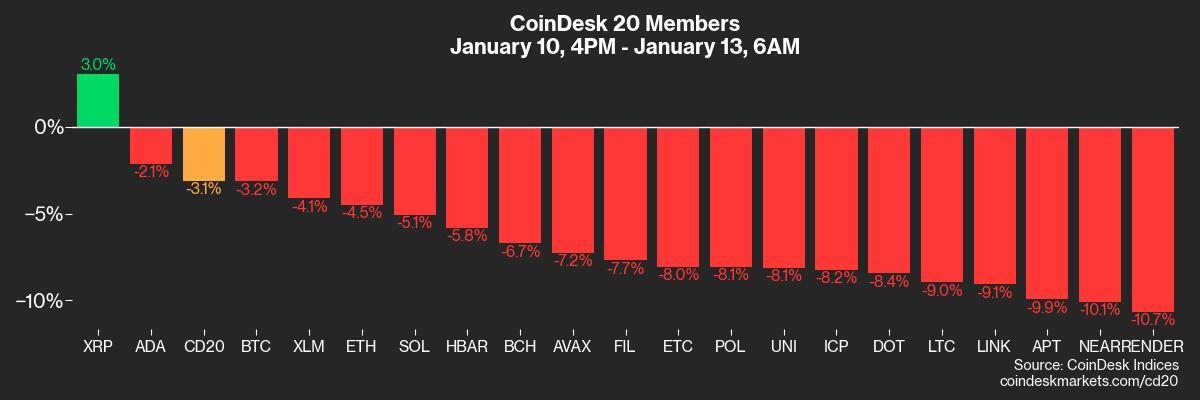
DXY is up 0.35% at 110.04
Gold is down 0.13% at $2,705.00/oz
Silver is down 0.84% to $30.83/oz
Nikkei 225 closed -1.05% at 39,190.40
Hang Seng closed -1% at 18,874.14
FTSE is down 0.25% at 82,27.71
Euro Stoxx 50 is up 0.92% at 4,931.47
DJIA closed on Friday -1.63% to 41,938.45
S&P 500 closed -1.54% at 5,827.04
Nasdaq closed -1.63% at 19,161.63
S&P/TSX Composite Index closed -1.22% at 24,767.70
S&P 40 Latin America closed -1.31% at 2,181.96
U.S. 10-year Treasury is up 2 bps at 4.79%
E-mini S&P 500 futures are down 0.78% to 5,820.50
E-mini Nasdaq-100 futures are down 1.18% to 20,767.25
E-mini Dow Jones Industrial Average Index futures are down 0.48% at 42,022.00
Bitcoin Stats:
BTC Dominance: 58.39
Ethereum to bitcoin ratio: 0.033
Hashrate (seven-day moving average): 775 EH/s
Hashprice (spot): $54.6
Total Fees: 4.89 BTC/ $462,582
CME Futures Open Interest: 175,380 BTC
BTC priced in gold: 34.5 oz
BTC vs gold market cap: 9.82%
Technical Analysis
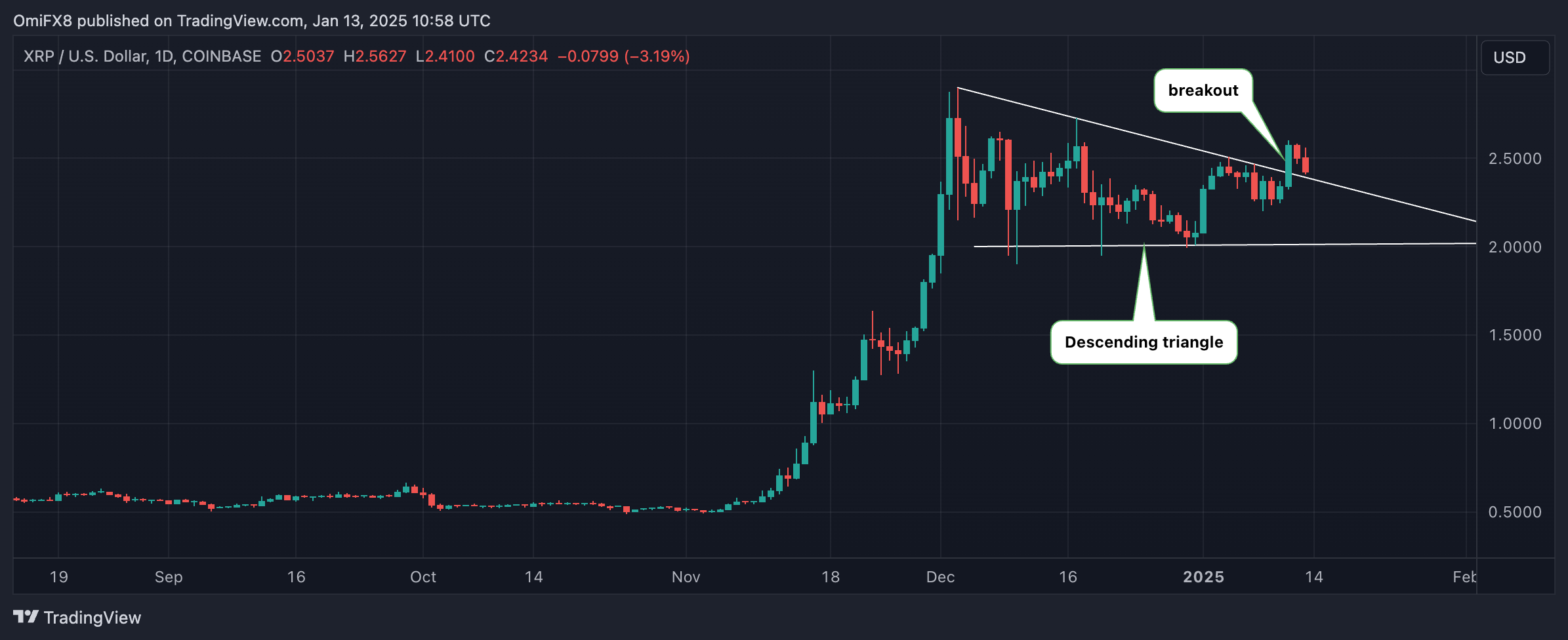
XRP broke out of a descending triangle pattern Friday, signaling a resumption of the broader uptrend from early November lows.
However, BTC’s macro-led risk-off action has pushed XRP back to the breakout point.
Watch out for a potential move back inside the triangle, as failed breakouts are powerful bearish reversal signals.
Crypto Equities
MicroStrategy (MSTR): closed on Friday at $327.91 (-1.14%), down 4.95% at $311.67 in pre-market.
Coinbase Global (COIN): closed at $258.78 (-0.47%), down 4.42% at $247.34 in pre-market.
Galaxy Digital Holdings (GLXY): closed at C$27.07 (+0.82%)
MARA Holdings (MARA): closed at $17.86 (-2.62%), down 4.59% at $17.04 in pre-market.
Riot Platforms (RIOT): closed at $12.00 (-0.17%), down 5.25% at $11.37 in pre-market.
Core Scientific (CORZ): closed unchanged at $14.04, down 3.49% at $13.55 in pre-market.
CleanSpark (CLSK): closed unchanged at $10.09, down 5.05% at $9.58 in pre-market
CoinShares Valkyrie Bitcoin Miners ETF (WGMI): closed at $23.11 (-0.17%), down 4.41% at $22.09 in pre-market.
Semler Scientific (SMLR): closed at $51.36 (+2.33%), down 7.03% at $47.75 in pre-market.
Exodus Movement (EXOD): closed unchanged at $37.77, down 9.98% at $34.00 in pre-market.
ETF Flows
Spot BTC ETFs:
Daily net flow: $-149.4 million
Cumulative net flows: $36.22 billion
Total BTC holdings ~ 1.137 million.
Spot ETH ETFs
Daily net flow: $-68.5 million
Cumulative net flows: $2.45 billion
Total ETH holdings ~ 3.582 million.
Source: Farside Investors, as of Jan. 10.
Overnight Flows
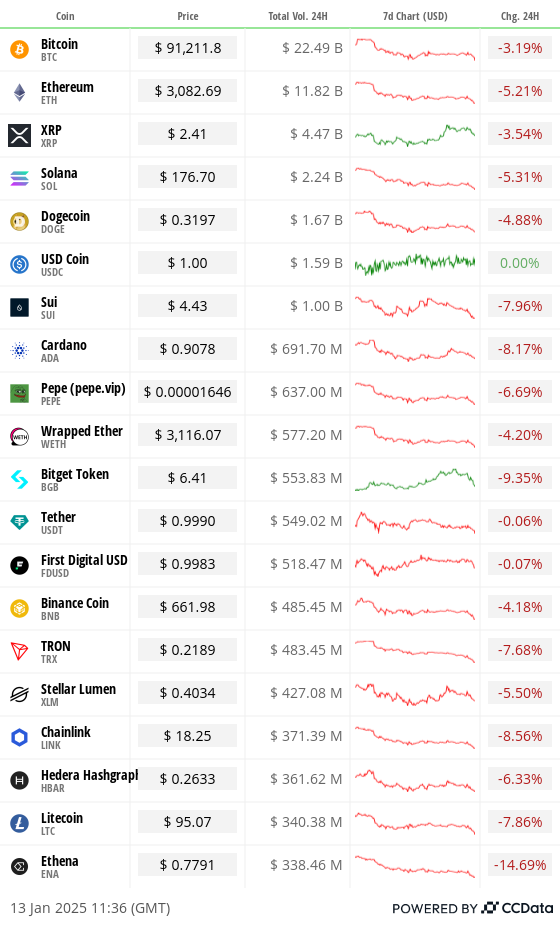
Chart of the Day

The number of Bitcoin Runes minted daily has slipped to a record lows, averaging less than 10% of last year’s figures.
Runes was a big hit among traders following the Bitcoin blockchain’s reward halving in April last year.
Runes is similar to Ordinals, allows people to “etch” and mint tokens on-chain.
While You Were Sleeping
Bitcoin Under Pressure as Goldman Trims Fed Rate Cut Expectations, BofA Sees Potential Hike After Blowout Jobs Report (CoinDesk): Bitcoin fell below $93K during Monday’s European trading hours as strong U.S. jobs data spurred investment banks to revise Fed rate cut expectations, with some warning of potential hikes.
Singapore Blocks Polymarket, Following Taiwan and France (CoinDesk): Over the weekend, Singapore blocked access to Polymarket, labeling it an unlicensed gambling site. This follows similar actions in Taiwan and France, as global scrutiny of the platform grows.
AI Agent Tokens Reel From a Steep Market Correction (The Block): AI agent tokens plunged over the past week, with AI16Z going from $2.26 to $1.10 and GOAT falling from $0.5 to $0.33, while bitcoin held steady around the $95,000 level.
Global Bond Tantrum Is a Wrenching and Worrisome Start to New Year (Bloomberg): U.S. Treasury yields are nearing 5%, driven by strong economic growth, persistent inflation, and rising government debt, raising global borrowing costs and reducing demand for riskier investments like stocks.
Dollar Hits 2-Year High After Robust US Data Pares Back Bets on Rate Cuts (Financial Times): On Monday, the U.S. dollar index hit a two-year high following Friday’s strong U.S. jobs report. Oil prices rose, with Brent reaching $81 and WTI hitting $77.90, on new Russian sanctions.
ECB Seeking Middle Ground With Rate Cuts, Lane Tells Newspaper (Reuters): The European Central Bank (ECB) plans cautious monetary easing, striving to curb inflation without triggering recession, as wage growth moderates and inflation approaches its 2% target by mid-2025.
In the Ether
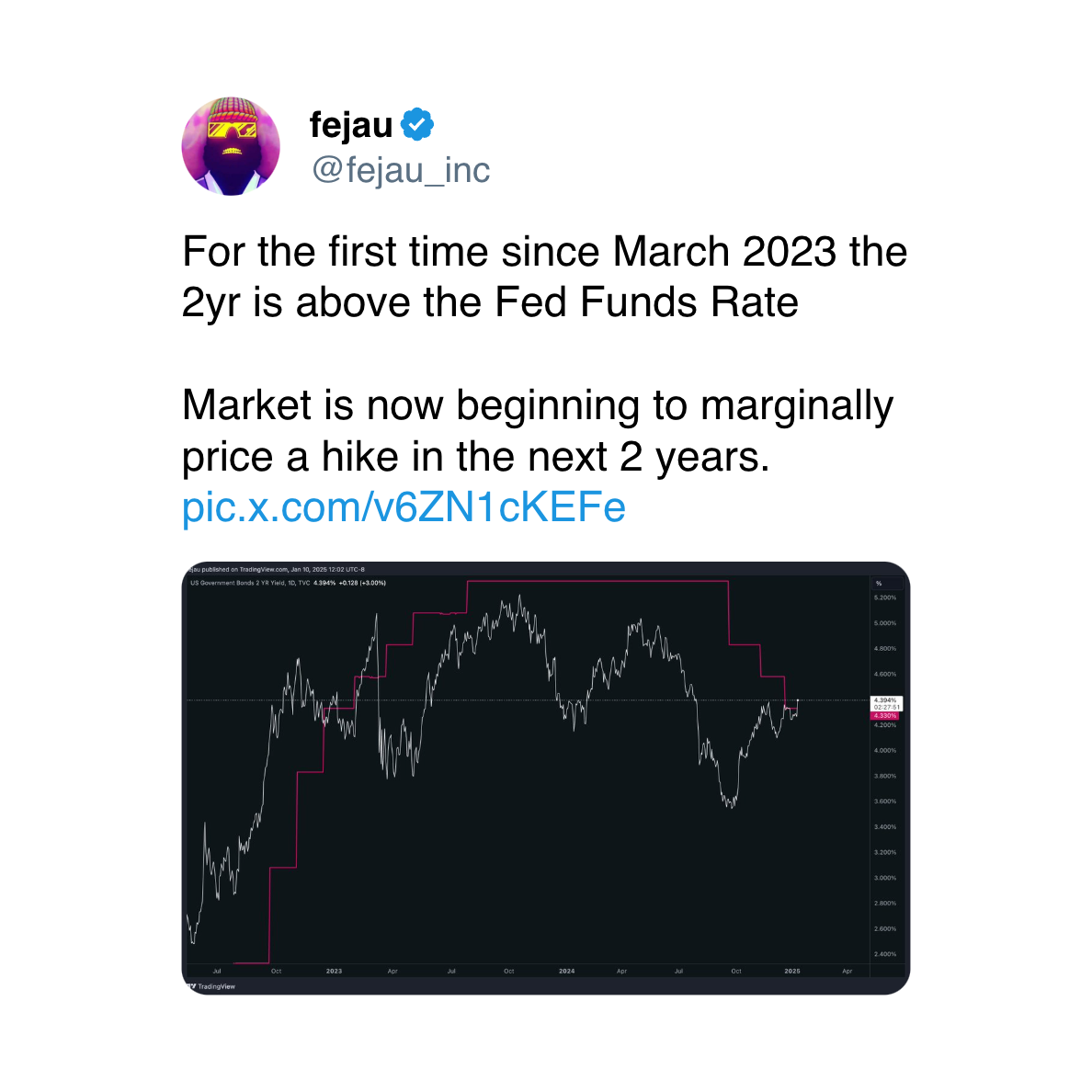
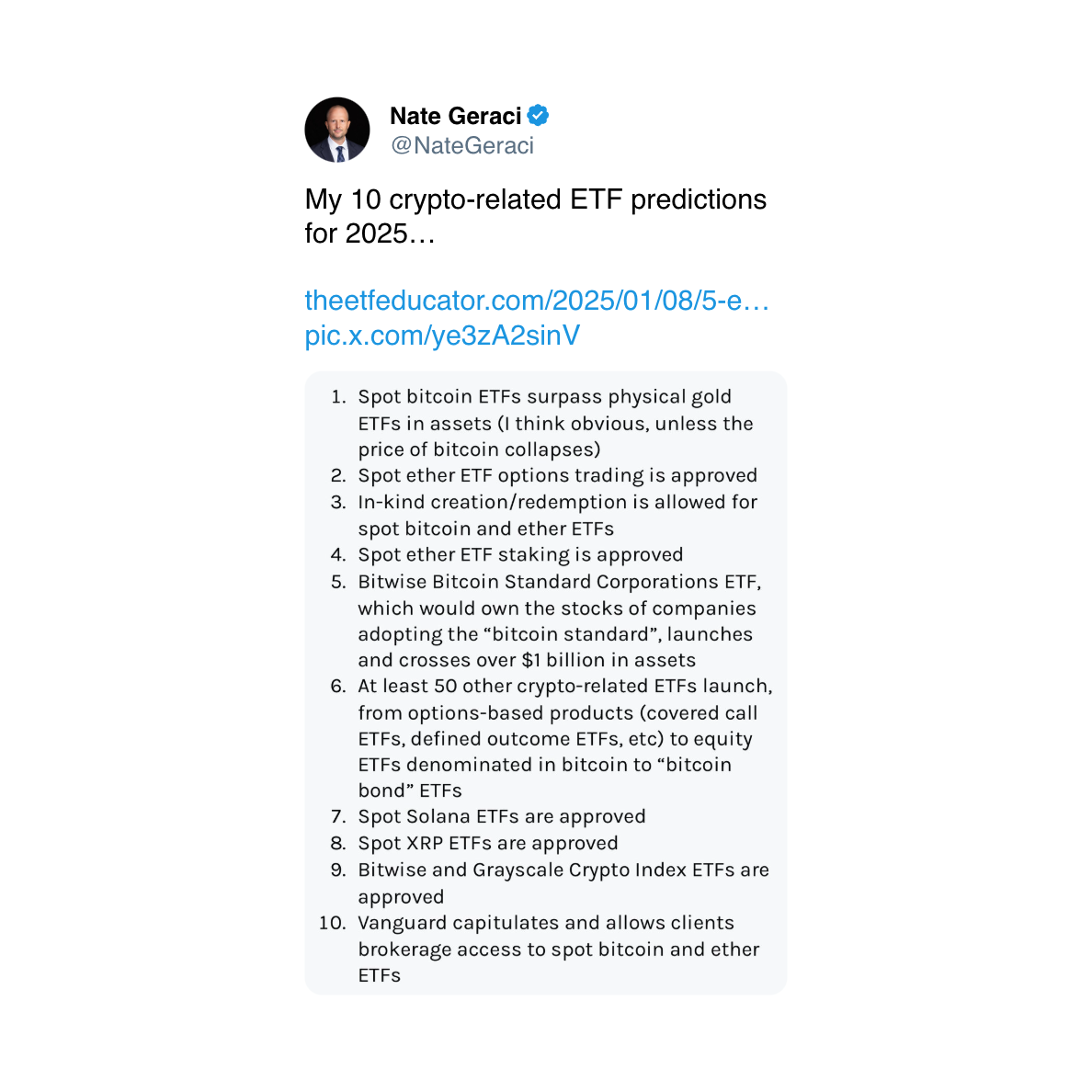
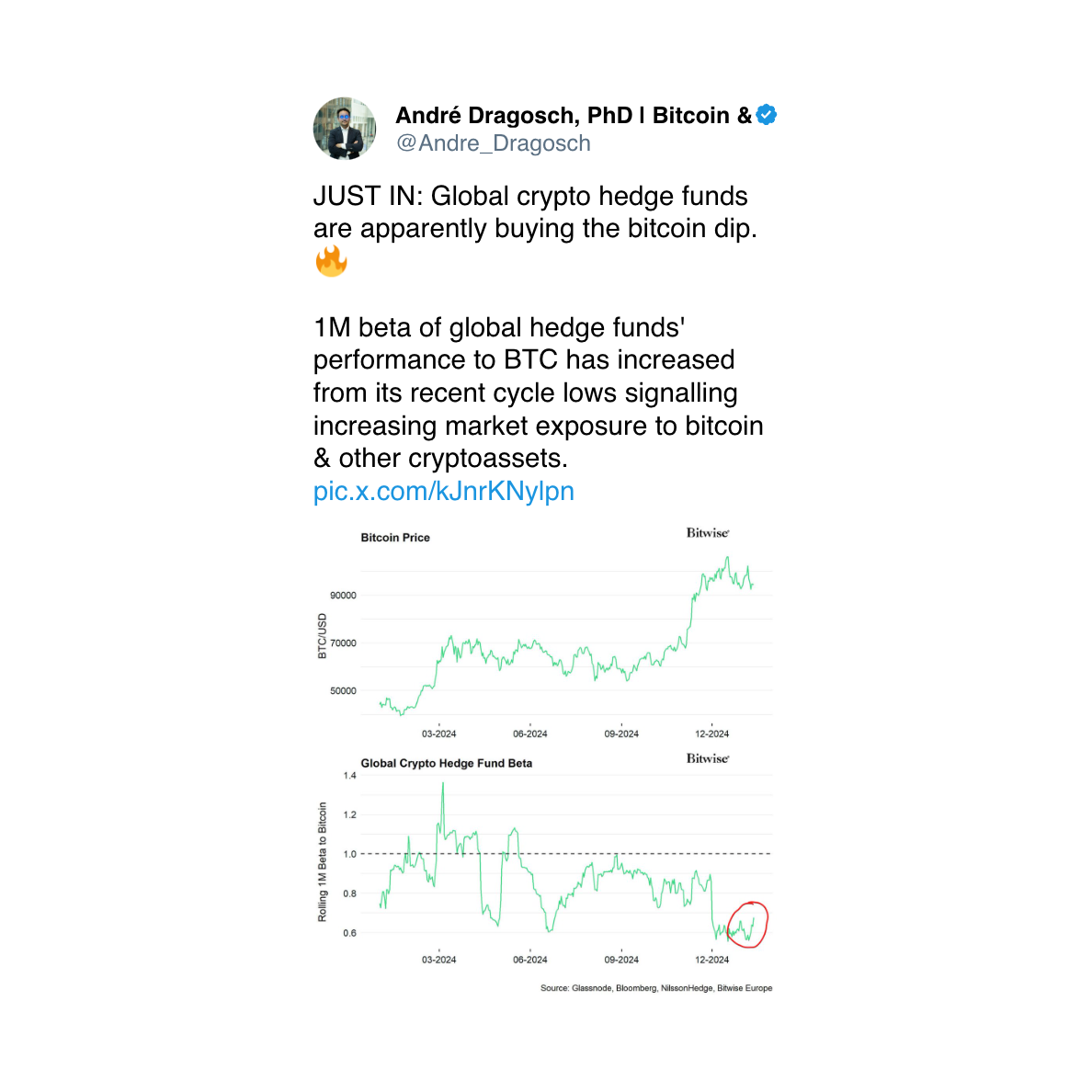
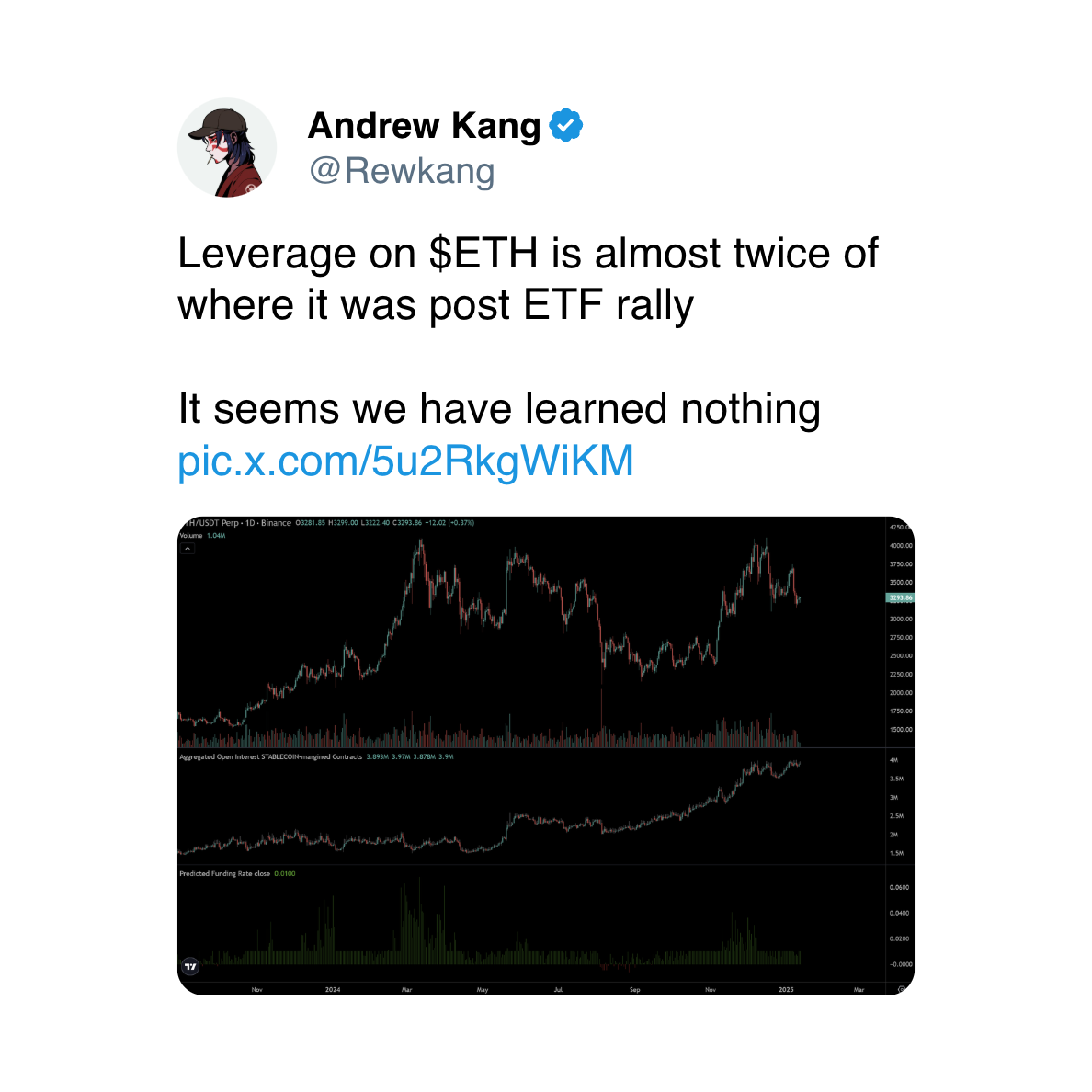
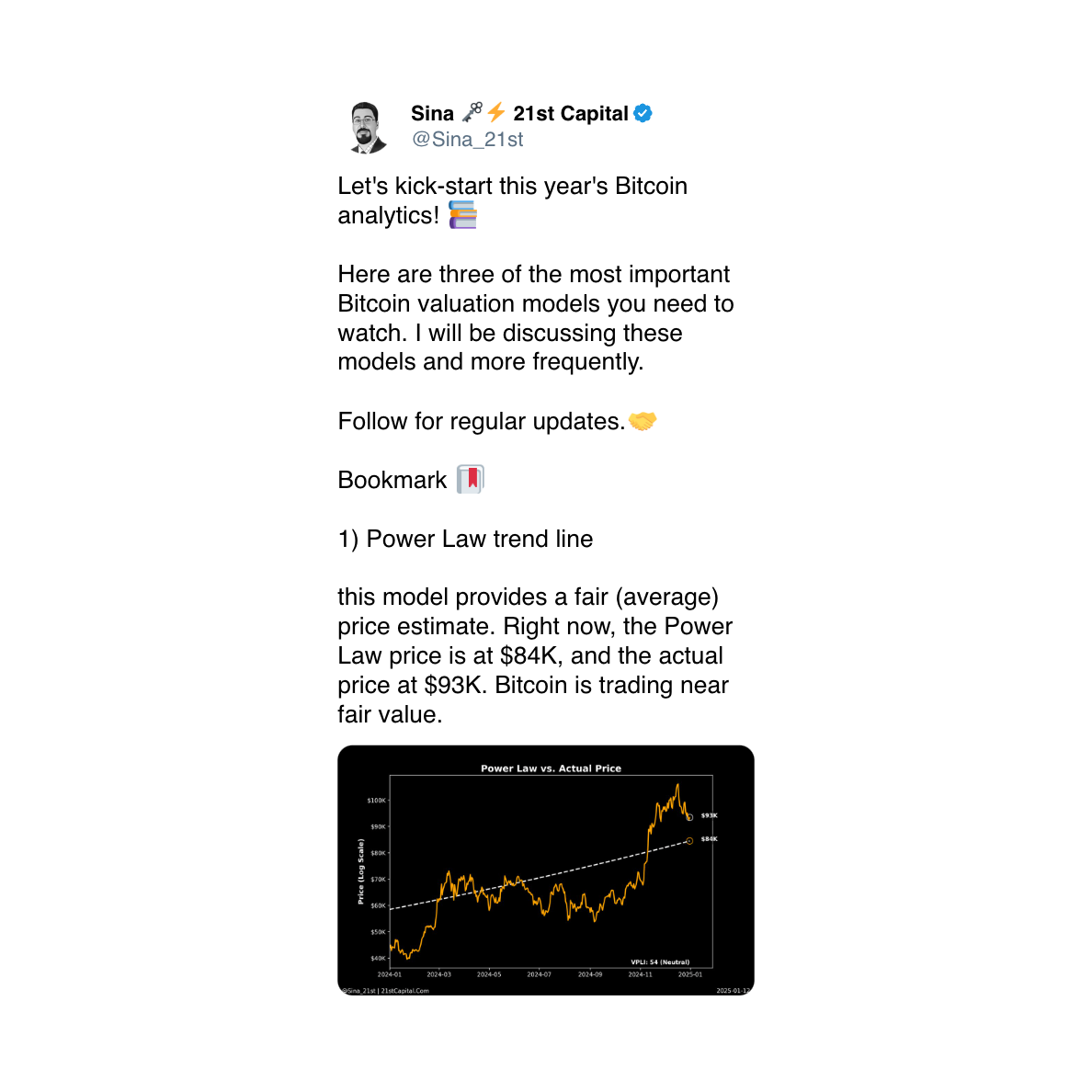
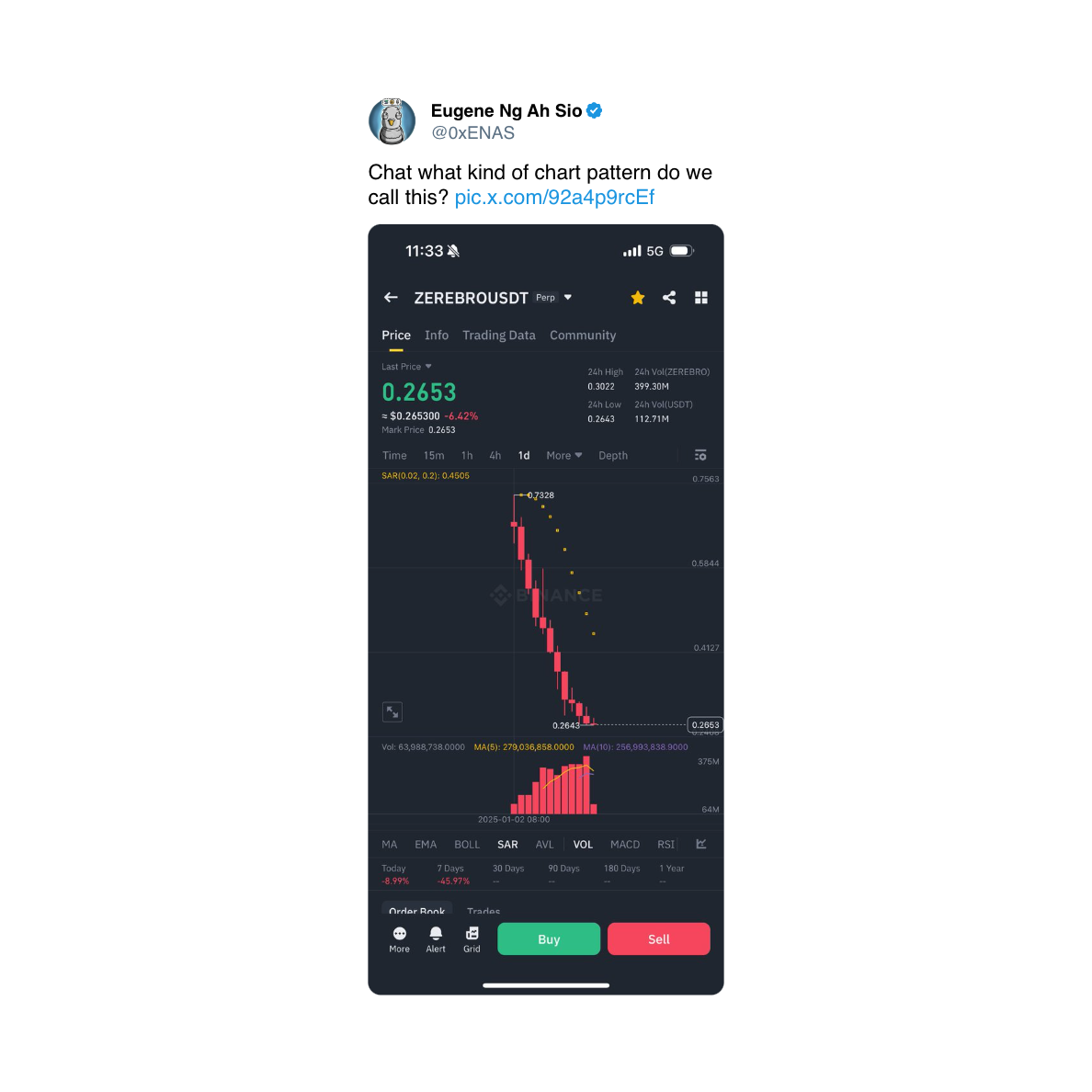
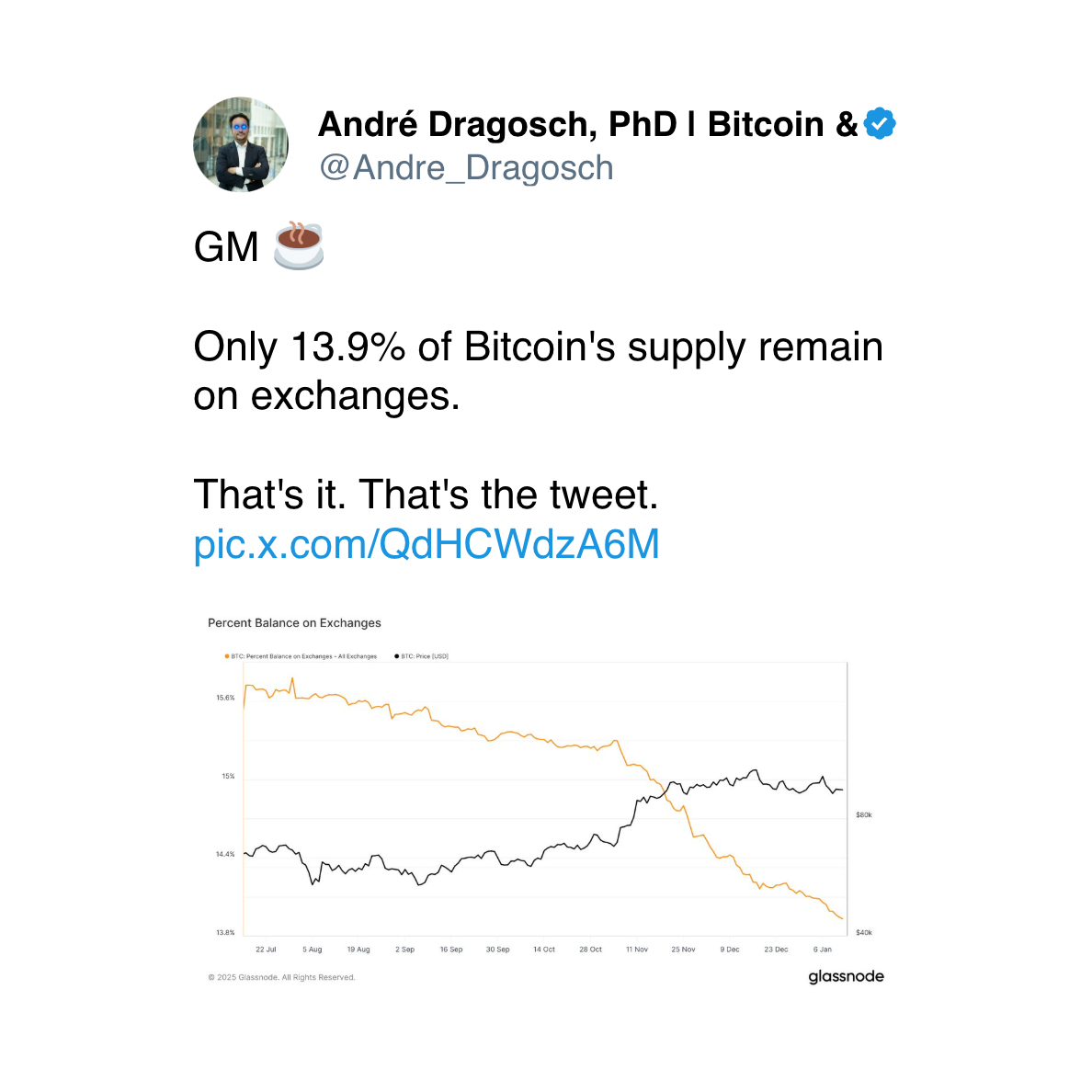
Business
AAVE Sees 64% Flash Crash as DeFi Protocol Endures ‘Largest Stress Test’

The native token of Aave (AAVE), the largest decentralized crypto lending protocol, was caught in the middle of Friday’s crypto flash crash while the protocol proved resilient in a historic liquidation cascade.
The token, trading at around $270 earlier in Friday, nosedived as much as 64% later in the session to touch $100, the lowest level in 14 months. It then staged a rapid rebound to near $240, still down 10% over the past 24 hours.
Stani Kulechov, founder of Aave, described Friday’s event as the «largest stress test» ever for the protocol and its $75 billion lending infrastructure.
The platform enables investors to lend and borrow digital assets without conventional intermediaries, using innovative mechanisms such as flash loans. Despite the extreme volatility, Aave’s performance underscores the evolving maturity and resilience of DeFi markets.
«The protocol operated flawlessly, automatically liquidating a record $180M worth of collateral in just one hour, without any human intervention,» Kulechov said in a Friday X post. «Once again, Aave has proven its resilience.»
Key price action:
- AAVE sustained a dramatic flash crash on Friday, declining 64% from $278.27 to $100.18 before recuperating to $240.09.
- The DeFi protocol demonstrated remarkable resilience with its native token’s 140% recovery from the intraday lows, underpinned by substantial trading volume of 570,838 units.
- Following the volatility, AAVE entered consolidation territory within a narrow $237.71-$242.80 range as markets digested the dramatic price action.
Technical Indicators Summary
- Price range of $179.12 representing 64% volatility during the 24-hour period.
- Volume surged to 570,838 units, substantially exceeding the 175,000 average.
- Near-term resistance identified at $242.80 capping rebound during consolidation phase.
Disclaimer: Parts of this article were generated with the assistance from AI tools and reviewed by our editorial team to ensure accuracy and adherence to our standards. For more information, see CoinDesk’s full AI Policy.
Business
Blockchain Will Drive the Agent-to-Agent AI Marketplace Boom

AI agents, software systems that use AI to pursue goals and complete tasks on behalf of users, are proliferating. Think of them as digital assistants that can make decisions and take actions towards goals you set without needing step-by-step instructions — from GPT-powered calendar managers to trading bots, the number of use cases is expanding rapidly. As their role expands across the economy, we have to build the right infrastructure that will allow these agents to communicate, collaborate and trade with one another in an open marketplace.
Big tech players like Google and AWS are building early marketplaces and commerce protocols, but that raises the question: will they aim to extract massive rents through walled gardens once more? Agents’ capabilities are clearly rising, almost daily, with the arrival of new models and architectures. What’s at risk is whether these agents will be truly autonomous.
Autonomous agents are valuable because they unlock a novel user experience: a shift from software as passive or reactive tools to active and even proactive partners. Instead of waiting for instructions, they can anticipate needs, adapt to changing conditions, and coordinate with other systems in real time, without the user’s constant input or presence. This autonomy in decision-making makes them uniquely suited for a world where speed and complexity outpace human decision-making.
Naturally, some worry about what greater decision-making autonomy means for work and accountability — but I see it as an opportunity. When agents handle repetitive, time-intensive tasks and parallelize what previously had to be done in sequence, they expand our productive capacity as humans — freeing people to engage in work that demands creativity, judgment, composition and meaningful connection. This isn’t make-believe, humanity has been there before: the arrival of corporations allowed entrepreneurs to create entirely new products and levels of wealth previously unthought of. AI agents have the potential to bring that capability to everyone.
On the intelligence side, truly autonomous decision-making requires AI agent infrastructure that is open source and transparent. OpenAI’s recent OSS release is a good step. Chinese labs, such as DeepSeek (DeepSeek), Moonshot AI (Kimi K2) and Alibaba (Qwen 3), have moved even quicker.
However, autonomy is not purely tied to intelligence and decision making. Without resources, an AI agent has little means to enact change in the real world. Hence, for agents to be truly autonomous they need to have access to resources and self-custody their assets. Programmable, permissionless, and composable blockchains are the ideal substrate for agents to do so.
Picture two scenarios. One where AI agents operate within a Web 2 platform like AWS or Google. They exist within the limited parameters set by these platforms in what is essentially a closed and permissioned environment. Now imagine a decentralized marketplace that spans many blockchain ecosystems. Developers can compose different sets of environments and parameters, therefore, the scope available to AI agents to operate is unlimited, accessible globally, and can evolve over time. One scenario looks like a toy idea of a marketplace, and the other is an actual global economy.
In other words, to truly scale not just AI agent adoption, but agent-to-agent commerce, we need rails that only blockchains can offer.
The Limits of Centralized Marketplaces
AWS recently announced an agent-to-agent marketplace aimed at addressing the growing demand for ready-made agents. But their approach inherits the same inefficiencies and limitations that have long plagued siloed systems. Agents must wait for human verification, rely on closed APIs and operate in environments where transparency is optional, if it exists at all.
To act autonomously and at scale, agents can’t be boxed into closed ecosystems that restrict functionality, pose platform risks, impose opaque fees, or make it impossible to verify what actions were taken and why.
Decentralization Scales Agent Systems
An open ecosystem allows for agents to act on behalf of users, coordinate with other agents, and operate across services without permissioned barriers.
Blockchains already offer the key tools needed. Smart contracts allow agents to perform tasks automatically, with rules embedded in code, while stablecoins and tokens enable instant, global value transfers without payment friction. Smart accounts, which are programmable blockchain wallets like Safe, allow users to restrict agents in their activity and scope (via guards). For instance, an agent may only be allowed to use whitelisted protocols. These tools allow AI agents not only to behave expansively but also to be contained within risk parameters defined by the end user. For example, this could be setting spending limits, requiring multi-signatures for approvals, or restricting agents to whitelisted protocols.
Blockchain also provides the transparency needed so users can audit agent decisions, even when they aren’t directly involved. At the same time, this doesn’t mean that all agent-to-agent interactions need to happen onchain. E.g. AI agents can use offchain APIs with access constraints defined and payments executed onchain.
In short, decentralized infrastructure gives agents the tools to operate more freely and efficiently than closed systems allow.
It’s Already Happening Onchain
While centralized players are still refining their agent strategies, blockchain is already enabling early forms of agent-to-agent interaction. Onchain agents are already exhibiting more advanced behavior like purchasing predictions and data from other agents. And as more open frameworks emerge, developers are building agents that can access services, make payments, and even subscribe to other agents — all without human involvement.
Protocols are already implementing the next step: monetization. With open marketplaces, people and businesses are able to rent agents, earn from specialized ones, and build new services that plug directly into this agent economy. Customisation of payment models such as subscription, one-off payments, or bundled packages will also be key in facilitating different user needs. This will unlock an entirely new model of economic participation.
Why This Distinction Matters
Without open systems, fragmentation breaks the promise of seamless AI support. An agent can easily bring tasks to completion if it stays within an individual ecosystem, like coordinating between different Google apps. However, where third-party platforms are necessary (across social, travel, finance, etc), an open onchain marketplace will allow agents to programmatically acquire the various services and goods they need to complete a user’s request.
Decentralized systems avoid these limitations. Users can own, modify, and deploy agents tailored to their needs without relying on vendor-controlled environments.
We’ve already seen this work in DeFi, with DeFi legos. Bots automate lending strategies, manage positions, and rebalance portfolios, sometimes better than any human could. Now, that same approach is being applied as “agent legos” across sectors including logistics, gaming, customer support, and more.
The Path Forward
The agent economy is growing fast. What we build now will shape how it functions and for whom it works. If we rely solely on centralized systems, we risk creating another generation of AI tools that feel useful but ultimately serve the platform, not the person.
Blockchain changes that. It enables systems where agents act on your behalf, earn on your ideas, and plug into a broader, open marketplace.
If we want agents that collaborate, transact, and evolve without constraint, then the future of agent-to-agent marketplaces must live onchain.
Business
‘Largest Ever’ Crypto Liquidation Event Wipes Out 6,300 Wallets on Hyperliquid

More than 1,000 wallets on Hyperliquid were completely liquidated during the recent violent crypto sell-off, which erased over $1.23 billion in trader capital on the platform, according to data from its leaderboard.
In total, 6,300 wallets are now in the red, with 205 losing over $1 million each according to the data, which was first spotted by Lookonchain. More than 1,000 accounts saw losses of at least $100,000.
The wipeout came as crypto markets reeled from a global risk-off event triggered by U.S. President Donald Trump’s announcement of a 100% additional tariff on Chinese imports.
The move spooked investors across asset classes and sent cryptocurrency prices tumbling. Bitcoin briefly dropped below $110,000 and ether fell under $3,700, while the broader market as measured by the CoinDesk 20 (CD20) index dropped by 15% at one point.
The broad sell-off led to over $19 billion in liquidations over a 24 hours period, making it the largest single-day liquidation event in crypto history by dollar value. According to CoinGlass, the “actual total” of liquidations is “likely much higher” as leading crypto exchange Binance doesn’t report as quickly as other platforms.
Leaderboard data reviewed by CoinDesk shows the top 100 traders on Hyperliquid gained $1.69 billion collectively.
In comparison, the top 100 losers dropped $743.5 million, leaving a net profit of $951 million concentrated among a handful of highly leveraged short sellers.
The biggest winner was wallet 0x5273…065f, which made over $700 million from short positions, while the largest loser, “TheWhiteWhale,” dropped $62.5 million.
Among the victims of the flush is crypto personality Jeffrey Huang, known online as Machi Big Brother, who once launched a defamation suit against ZachXBT, losing almost the entire value of his wallet, amounting to $14 million.
«Was fun while it lasted,» he posted on X.
Adding to the uncertainty, the ongoing U.S. government shutdown has delayed the release of key economic data. Without official indicators, markets are flying blind at a time when geopolitical risk is rising.
-

 Business12 месяцев ago
Business12 месяцев ago3 Ways to make your business presentation more relatable
-

 Fashion12 месяцев ago
Fashion12 месяцев agoAccording to Dior Couture, this taboo fashion accessory is back
-

 Entertainment12 месяцев ago
Entertainment12 месяцев ago10 Artists who retired from music and made a comeback
-

 Entertainment12 месяцев ago
Entertainment12 месяцев ago\’Better Call Saul\’ has been renewed for a fourth season
-

 Entertainment12 месяцев ago
Entertainment12 месяцев agoNew Season 8 Walking Dead trailer flashes forward in time
-

 Business12 месяцев ago
Business12 месяцев ago15 Habits that could be hurting your business relationships
-

 Entertainment12 месяцев ago
Entertainment12 месяцев agoMeet Superman\’s grandfather in new trailer for Krypton
-

 Entertainment12 месяцев ago
Entertainment12 месяцев agoDisney\’s live-action Aladdin finally finds its stars





